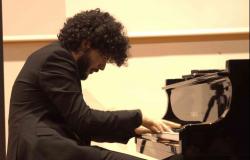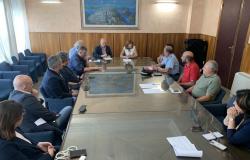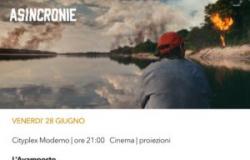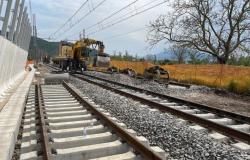Jane Thompson, Welshman with quicksilver on him, is the architect-manager of the Herculaneum Conservation Project wanted by the Packard Humanities Institute, with which David, the son of the Silicon Valley, it has been financing the rebirth of the excavations of Herculaneum and its surroundings for over twenty years, in a virtuous example of public-private partnership. Yesterday yet another milestone was reached, with the reopening of the ancient beach: one of the many results in 23 years of activity, with over 60 million euros invested.
Why did Packard choose Herculaneum?
«He studied classical subjects, he had already followed archaeological projects in Türkiye, Ukraine, Albania. But he wanted a project in Italy. Legend has it that he first visited Nero’s Domus Aurea in Rome. “Too small,” she said. And so they accompanied him here.”
Was it love at first sight?
«After the glories of the late 1950s, during the time of Amedeo Maiuri, the site was in decay. But Packard supports things that other philanthropists would never support. Like the 900 linear meters of ancient sewers that were restored.”
Meaning what?
«When we arrived, in 2001, it was a swamp here. There were pigeons and guano everywhere, very few staff. We mapped all the puddles and “dried” the city before restoring, otherwise it would have been a waste of money.”
On the other hand, you claim that most of your interventions are “invisible”.
«We are not like Tod’s at the Colosseum or the Japanese philanthropist for the
Pyramid in Rome. We give solutions, results, not funds. More than flagship restorations, we are interested in scheduled maintenance. Instead of restoring the paintings to perfection, we worked with the Park on repairs to the roofs of the buildings, so that the water did not damage the frescoes. Acting on the causes of degradation, working on the site and on the entire urban scale, was the first paradigm shift.”
And the second?
«Working with the territory. Contacts with the local community, the old excavation workers, the children. Once upon a time, those who paid the ticket saw the ancient city, but the residents of the neighborhood next to the excavations saw a wall. Today, with that “Berlin Wall” torn down, the view of the city restored and Via Mare redeveloped, everything is different.”
Your experience here was only supposed to last five years. 23 have passed.
«At the beginning there was no legislative framework, we donated studies and consultancy. The turning point came with the Urbani code on cultural heritage. We could donate results, carry out restorations.”
Another turning point was the autonomy of the Park.
«The ministry recognizes that problems are solved here, the partnership has become real as we finally have a real counterpart, director Sirano and his staff. There is continuous collaboration, with weekly meetings also with David Packard who actively follows everything.”
A year after your arrival, at an international conference, ancient Herculaneum was defined as “the worst example of archaeological conservation in a country not devastated by war”.
«It was mortifying. But in ten years things have changed radically.”
And in 2012 the UNESCO president had very different words for the archaeological area.
«He defined it as “a positive model, whose best practices can be replicated in other archaeological areas in the world”».
And today?
«It is a small but very rich site. It has a third of the paintings of Pompeii on a surface ten times smaller. And scheduled maintenance costs one and a half million a year, financed with Park revenue.”
Has the partnership implemented in Herculaneum also become a model?
«The Minister of Culture said of us in 2021: “A beautiful example of cultural patronage that has shown the way to many other realities and to the recent reforms of cultural heritage. And furthermore: “Not a simple donation of money, but constant and widespread support to the public administration, with injections of multidisciplinary intellectual resources that have favored the relationship with the territory and its communities”».
Next goals?
«We have finished the complete digitalisation, a portal will be online in July. An agricultural land that will be donated soon will host storage and laboratories. It is the first step for the next generations to expand the excavation area towards the east. It will be in five or twenty years, but it will happen.”
© ALL RIGHTS RESERVED
Read the full article at
The morning





